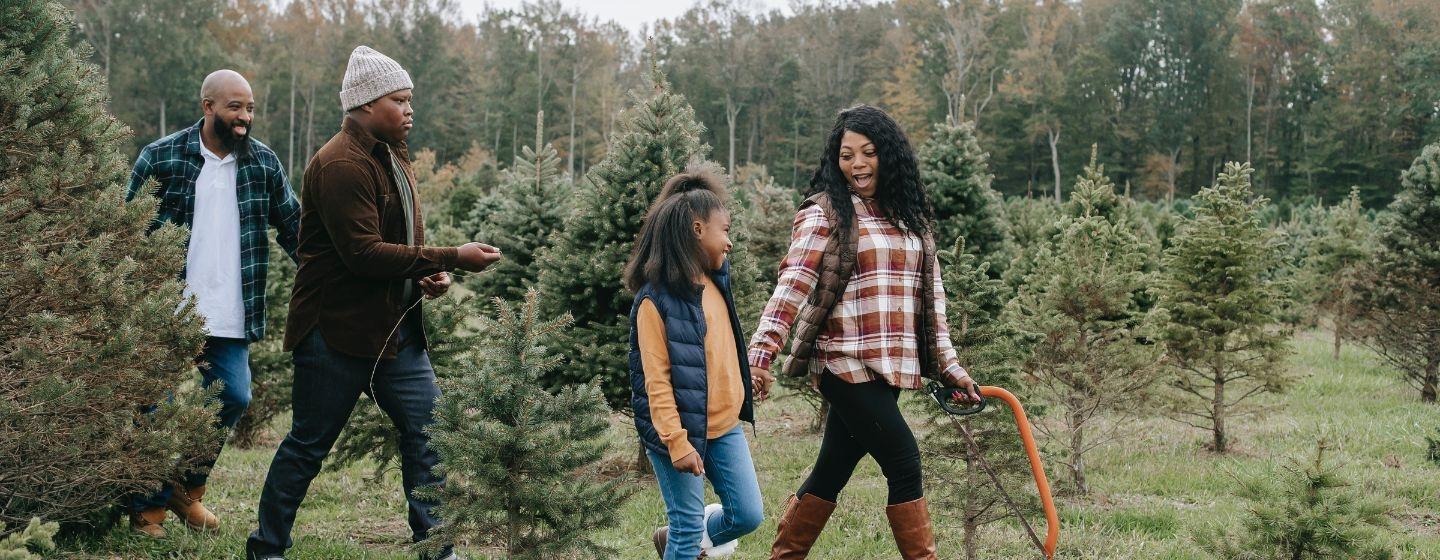NC State Researchers Work to Create the Perfect Christmas Tree


I know, Christmas has passed, and we’re 11 months away from next Christmas. But get in the holiday spirit one more time because this research is just too fascinating not to share.
For many people, the Christmas tree is the centerpiece of holiday decorations, and a live Christmas tree is extra special. That’s especially true when the pine smell fills the room.
But between the falling needles making a mess, the odd bend in the trunk you hadn’t noticed at the tree lot and the bare spots with no branches, a lot of people choose to go with an artificial tree.
The search for the perfect Christmas tree continues, and that’s why the NC State Christmas Tree Genetics Program has spent more than four decades working to develop “elite” Fraser fir trees.
“Our trees will make the lives of both growers and consumers easier,” said Justin Whitehill, director of the program, in a news release. “These trees will have a superior growth rate and appearance, and they will also retain their leaves longer after harvest.”
In the late 1990s, researchers with the Christmas Tree Genetics Program evaluated and tested more than 30,000 Fraser firs to identify those with the best genetic characteristics.
They eventually identified the best 25 from the group and then propagated and planted them in 2018 on a six-acre seed orchard at the North Carolina Department of Agriculture and Consumer Services Upper Mountain Research Station.
More than 1,000 trees are growing in the seed orchard, and some are already producing seed-bearing cones. A single cone can contain up to 100 seeds.
Researchers collect the cones for study and will eventually send them to a seed processing facility. They plan to distribute the seeds to growers between 2026 and 2028.
NC State’s trees have a straighter stem, which allows the branches to grow slightly upward to form a symmetrical shape with a pointed top, the perfect Christmas tree shape. Currently, many growers shear Fraser firs to slow their growth rate and ensure they develop into that ideal shape.
In addition, NC State’s trees lose just 1–2% of their needles, even when they are in the house.
Plus, there’s good news for farmers. These elite trees are ready to harvest about one year earlier than traditional Fraser firs, providing a faster return on their investment. Right now, it takes 7 to 10 years for trees to be ready to harvest at the standard commercial height of 6 to 7 feet.
Christmas trees are big business in North Carolina. The North Carolina Christmas Tree Association reports that the state produces about 20% of the Christmas trees grown in the U.S.
The primary tree grown in the state is the Fraser fir. There are about 1,300 growers producing an estimated 40,000 acres (about twice the area of Manhattan) of Fraser firs. Those trees are shipped to every state in the nation, as well as Mexico, Canada, the Caribbean Islands and other places around the world.
North Carolina is second in the nation in production behind the Pacific Northwest but first in revenue generated. All those Carolina trees add up to a $134M industry.
“Each of the trees selected for the orchard had a conical shape with dense branches, held their needles and grew a bit faster, so we expect their offspring to grow that way as well,” adds Whitehill. “If we can grow trees that already look good, it’s going to eliminate the need for manual labor, which will save growers money. And it’s also going to make customers happy.”
If growers plant the genetically improved seeds from the research center, the trees would be ready for consumers by 2036.